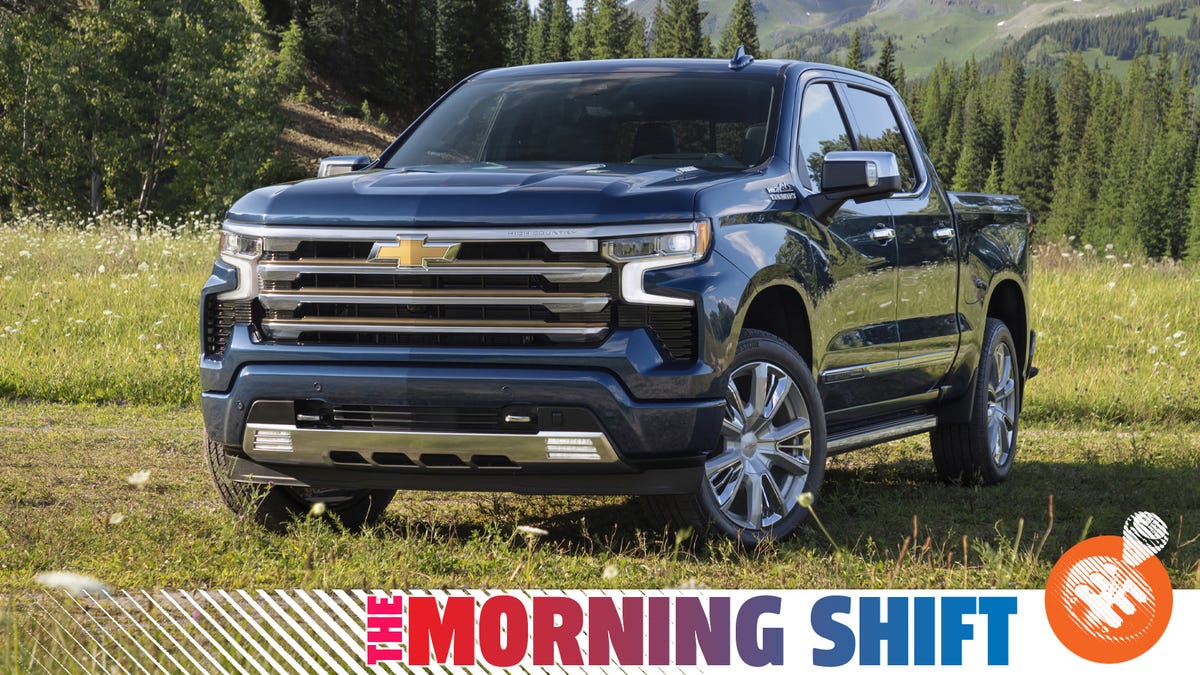The Average GM Car Cost $6,600 More Last Quarter Alone

Image: General Motors
GM is doing its best in tough times, Tesla was subpoenaed again for that tweet, and Volkswagen is now building the ID.4 in Tennessee. All that and more in this Tuesday installment of The Morning Shift for July 26, 2022.
1st Gear: General Still Plans to Hit Year-End Targets
GM ended the second quarter reporting a 40-percent slide to net income versus the same period last year due to the ongoing semiconductor crunch, though rising vehicle prices — particularly for large trucks and SUVs — allowed it to rake in $1.6 billion more in net revenue. The company still believes it’ll achieve its forecasted full-year net income between $9.6 billion and $11.2 billion, but concern over a potential recession has caused it to curtail hiring, for now. From Reuters:
The Detroit automaker’s net income fell 40% in the second quarter from a year earlier due to supply-chain snarls, including a global semiconductor chip shortage, sending its shares down 1.2% in premarket trading.
In a shareholder letter, Chief Executive Mary Barra said the company was “already taking proactive steps to manage costs and cash flows” ahead of a possible slowdown in the economy.
“We have also modeled many downturn scenarios and we are prepared to take deliberate action when and if necessary,” she added.
The company has taken steps to offset a surge in inflation and other challenges, Chief Financial Officer Paul Jacobson said.
“We’ve slowed down some hiring (and) we have put off some costs and expenses we were going to make going into this year to try to balance that out with the pressure we’ve seen from both inflation as well as some of the other supply-chain challenges,” Jacobson told reporters on a conference call, adding that GM was not contemplating layoffs.
Average transaction prices for a GM vehicle rose $6,600 in the past quarter alone. GM expects global deliveries to improve sharply before 2022 is out, and there’s reason to be optimistic for the future; CEO Mary Barra announced Tuesday that the manufacturer has inked “binding agreements” for all the raw materials it needs, including lithium and cathode materials, to achieve annual production of one million EVs in North America in the next three years. What happens between now and then, though — that’s anyone’s guess.
2nd Gear: GM’s Big Brands Will Go Electric When They Feel Like It
In other GM news, Automotive News charted the timeline for how the company intends to transition to full electrification for its many brands. Four years from now, the only gas-powered Cadillac will probably be the Escalade:
Cadillac and Buick will be the first GM brands to go fully electric. Both intend to be all-electric by 2030. By 2026, the Escalade will be Cadillac’s only remaining gasoline-powered nameplate, and it will be sold alongside battery-powered versions.
But the General won’t opt for that strategy with brands like Chevrolet and GMC, its volume sellers. In those cases, they’ll allow ICE-powered models to ride out until the middle of the next decade, albeit with “minor” facelifts for existing nameplates:
The EV conversion for Chevrolet and GMC is more fluid as GM aspires to launch a fully electric lineup by 2035. The brands have a swath of EVs coming, especially toward the end of the decade, but many of their gasoline-powered vehicles will continue past 2026 without a known end date.
This is probably a more realistic course than the arbitrary “all-electric by 2030” claims that a number of manufacturers, particularly those from Europe, have been echoing over the last few years. Then again, ever-stringent European emissions laws sort of require the likes of Volkswagen and Mercedes-Benz to take a hardline approach with the transition. Of course, investors tend to eat it up, too.
3rd Gear: Tesla
Tesla is spending hundreds of millions more as it tries to increase production and maybe, someday, one day, give us the Cybertruck.
From Reuters:
Tesla Inc (TSLA.O) has increased its capital spending plan by $1 billion, the electric automaker said in a regulatory filing on Monday that also disclosed a second subpoena related to Chief Executive Elon Musk’s go-private tweets in 2018.
The company now expects to spend between $6 billion and $8 billion this year and each of the next two years, up from its previous expenditure plan of $5 billion-$7 billion, as it looks to ramp up production at its new facilities in Texas and Berlin.
Musk had last month said the factories are “losing billions of dollars” as they struggle to raise output due to a shortage of batteries and China port issues.
The Cybertruck is probably the most anticipated vehicle of this decade, assuming it gets here this decade.
4th Gear: Taycan Trouble
A report from German media picked up by Electrive has revealed a new global recall for the Porsche Taycan, numbering more than 40,000 vehicles. The issue pertains to the wiring harness for the front seats. If damaged, it could render safety features inoperable.
Porsche is recalling 40,421 units of the Taycan electric model worldwide. There is a possibility that the wiring harness of the driver’s and passenger’s seat could be damaged during the longitudinal adjustment of the seat.
In such a case, airbags and seatbelt tensioners could be deactivated. The recall with the internal code “ANA5” applies to the construction period 10 July 2019 to 18 May 2021.
Missteps and software gremlins, particularly related to EVs, are what ultimately forced soon-to-be-ex-Volkswagen CEO Herbert Diess out of his role. He’ll be replaced with Porsche chief Oliver Blume on September 1. This new recall comes shortly after another, also numbering about 40,000 cars, that could result in “sudden power loss.”
5th Gear: The ID.4 Is Being Built Right Here, Right Now
Volkswagen also kicked off production of its “good enough” ID.4 battery-electric crossover here in the States this week, at its Chattanooga, Tennessee plant, Reuters reported.
The German automaker said it plans to deliver ID.4 SUVs produced in Tennessee as early as October and will ramp up production to 7,000 cars per month by the end of 2022. VW is actively hiring more than 1,000 new production workers through the end of the year and plans to further increase U.S. EV production next year.
VW announced in 2019 it was investing $800 million in the factory to build EVs. The SUVs have batteries supplied by SK Innovation produced in Georgia. The automaker has delivered 190,000 ID.4 vehicles worldwide since it launched the vehicle in 2021.
Volkswagen also intends to start building a lower-capacity version of the ID.4, rated at 62 kWh, at its Chattanooga plant specifically for the U.S., with a lower base price rumored at around $35K. That variant should go on sale for the 2023 model year. The ID.4 currently starts at $41,230, excluding delivery and federal tax credits.
Reverse: A Dark Day at Michigan Speedway
It was on this day in 1998, 24 years ago, that three fans — Kenneth Fox, Sheryl Laster and Michael Tautkus — were killed at CART’s U.S. 500 at Michigan Speedway. From History.com:
While rounding the fourth turn at Michigan Speedway (a two-mile oval) in the 1998 U.S. 500, driver Adrian Fernandez lost control of his car and crashed into one of the raceway’s retaining walls. The car broke apart, and the right front tire and part of the suspension flew over the 15-foot-high wall and into the stands. Traveling nearly 200 mph, the debris hit fans in the eighth and 10th rows. Two people were killed instantly; another died moments later, and six others received minor injuries. To the outrage of Sports Illustrated reporter Rick Reilly, who wrote a scathing editorial about the incident in the magazine, race officials didn’t stop the event, which was won by the young Canadian driver Greg Moore.
Moore, of course, would tragically be killed little more than a year later, during CART’s 1999 season finale. The ’90s are often hailed as a golden era for American open-wheel racing, but it certainly also had its dark moments.
Neutral: What Say You?
I’ve driven exactly two EVs, an experience gap I’m looking to rectify in the final weeks of this summer. It was the ID.4 and Mini Cooper SE, and I liked but perhaps didn’t love either. If you’ve driven a few, which is your favorite and why?




